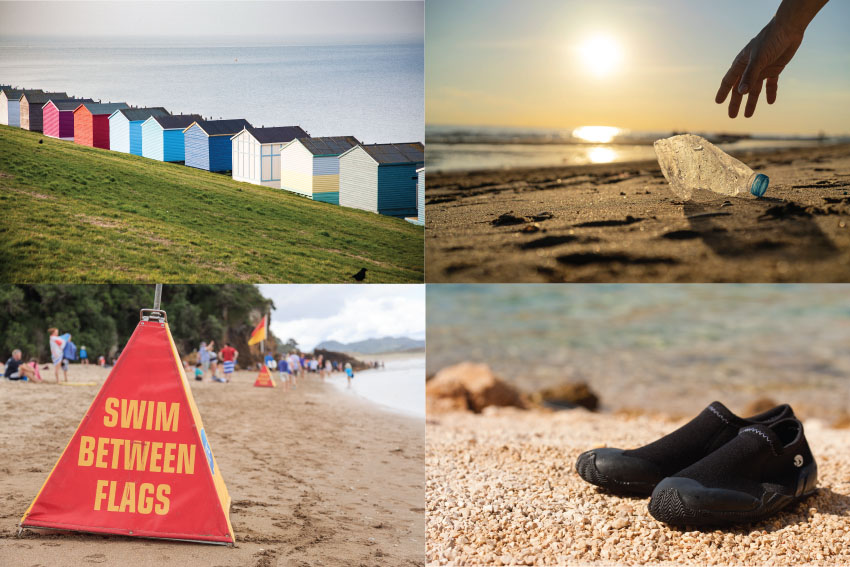
The equinox has happened, and the days are now getting longer. That means warmer weather is just around the corner. And, what do we all do at the hint of sun? Yep, we Brits head to our local beaches, parks, and lidos.
Before you hunt out your bikini, bucket and spade, to ensure your day out is the best, please take a look at our beach and ocean safety tips:
Wear Water Shoes
Hot sand, craggy rocks, weever fish, or limpets, you never know what you could stand on when walking to the shore or paddling in the sea. So, stay safe and protect those toes with some water shoes. They may not look particularly fashionable, but these water-friendly, rubber-based slip-ons will provide an effective barrier between your foot and any sharp objects to ensure a pain-free trip.
Pick Up Your Rubbish
Whether it is a picnic, BBQ, or an ice cream from the nearest kiosk, it’s odds on that you’ll get peckish while at the beach. Once you’re done, make sure to pop your rubbish in a bin or to take it home to safely dispose of it.
A few years ago, the Marine Conservation Society’s Great British Beach Clean found an average of 425 items of litter per 100 metres of beach. And a survey by the Ellen Macarthur Foundation revealed that approximately 80% of ocean litter originates from land-based sources.
So, not only will you prevent people or animals from harming themselves, but you could play a part in making our beaches look better and cleaning up the world’s oceans.
Don’t Drink and Swim
In a similar vein, you may enjoy a beverage or two on the sand. If you do, avoid going for a dip while intoxicated.
Why? Well, according to the Royal Life Saving Society UK, 44% of 16-25 who have lost their lives to accidental drowning had alcohol or drugs in their bloodstream. Even if you’re a strong swimmer, it really isn’t worth the risk.
Check the Weather Forecast
Great British weather can be anything but predictable, so we would always recommend checking the forecast before you make plans to head to the ocean.
However, the forecast can tell you so much more than the level of precipitation. High winds would suggest rough seas and high UV that could easily burn you. Therefore, you’ll know whether to pack extra sun cream and your boogie board, or not.
Keep an Eye Out For Flags and Signage
If you are wondering how to swim safely in the ocean, beyond checking the weather, try and choose a beach with a lifeguard present. These are trained professionals who keep people safe in the sea.
Lifeguard-monitored beaches will also use different coloured flags to identify ocean swimming safety.
These include:
• Red and yellow flag - indicates a patrolled area that is safe to swim in.
• Black and white chequered flag - represents an area that is dedicated to surfboards and kayaks, separate from swimmers.
• Red flag – suggests danger and you should not enter the water.
• Orange windsock – indicates the offshore wind conditions e.g. do not use an inflatable if the sock is flying.
If you would like to learn more about ocean safety rules, we’re sure the lifeguards would be happy to help. Otherwise, keep an eye out for other signage.
The ISO 20712-1:2008 standard for water safety signs applies to public areas such as pools, harbours, docks, and beaches. So, expect to see signs such as:
• Warning, deep water
• Warning, shallow water
• Warning, slipway
• No swimming
• No diving
• No sailing
• No surfboarding
• No rowing
• No windsurfing
• No inflatables
• No sub-aqua equipment
• No fishing
• No water skiing
• And many more.
Learn More About Water Safety Signs From Label Source
So, you now know the basics of swim safety at the beach. However, if you would like to learn more about the different types of beach signage, we can help. Take a look at our range of water safety signs, or read our blog post: Water Safety: How to Stay Safe With Water Safety Signs
Have a wonderful (and safe) time at the seaside!